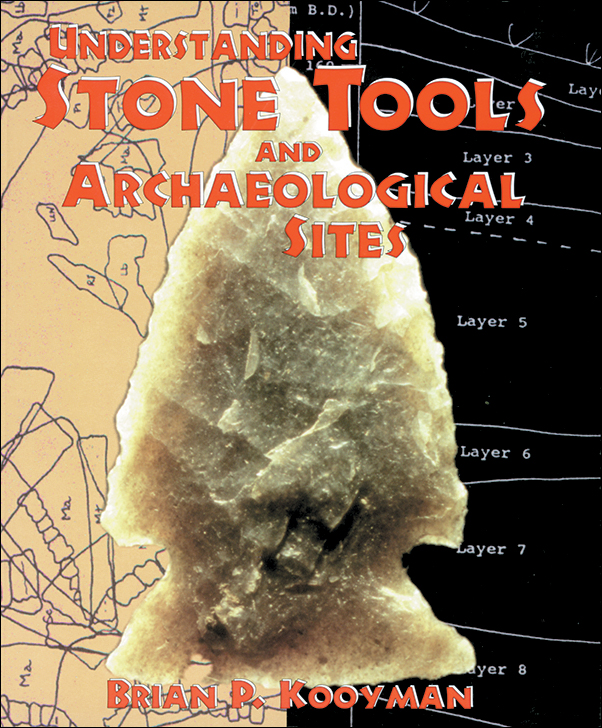
Understanding Stone Tools and Archaeological Sites
Brian P. Kooyman
$29.95 CAD / $29.95 USD
214 pages, 95 illustrations
Paperback: 978-1-55238-021-5
Library PDF: 978-1-55238-468-8
April 2000
A CHOICE Outstanding Academic Title, this valuable volume of investigative archaeology focuses on stone tools, the artifacts produced by these tools, and the revealing debris left behind at sites where they were produced.
Understanding Stone Tools and Archaeological Sites provides a comprehensive study in archaeological lithic analysis, This concise, “hands-on” guide to practical exploration at stone tool sites will become required reading for those pursuing studies of any sort in prehistoric lithic artifacts.
The majority of study sites discussed are in western North America, including Alberta’s own Head-Smashed-In Buffalo Jump, a World Heritage Site. Maps, illustrations, and photographs broadens the reader’s understanding of deriving meaning and relevance in the study of stone tool technology.
Brian Kooyman is a professor of archaeology at the University of Calgary.
Introduction to Lithic Analysis
Early History of Lithic Studies
Manufacturing Techniques and Brittle Material Fracture Mechanics
Introduction
Manufacturing Techniques
Flaking
Techniques to produce stone tools by flaking
Breaking flake types
Fracture Mechanics
Fracture initiation and the Hertzian cone
Analysis Implementation
General Lithic Types
Introduction
Silicate Materials
Rocks
Igneous rock classification
Separating igneous rocks in hand specimen
Sedimentary rock classification
Metamorphic rocks
Analysis Implementation
Sourcing Lithic Materials
Introduction
Sourcing by Non-Chemical Methods: Some Examples
Chemical Sourcing
Main problems with chemical sourcing analysis
Analysis Implementation
Lithic Reduction Strategies and Techniques
Introduction
Concept Models
Reduction Stage Analysis
Reduction stages
Practical approaches to analysis
Determining platform boundaries and scar counts
Mass analysis
Ground Stone Tool Reduction Stage Analysis
Heat Treatment of Lithic Material
Analysis Implementation
Survey of Worldwide Lithic Technology
Introduction
Lower Paleolithic
Upper Paleolithic
Middle Paleolithic
Mesolithic and Neolithic
Introduction to the Study of Lithic Production Variables
Introduction
Manufacturing Techniques: Flintknappers’ Experience
Controlled Scientific Experiments in Lithic Production Variables
Overall flake form
Other observations
Flintknappers’ Replication Studies
Analysis Implementation
The Meaning of Form in Lithic Tools
Type of Form
Functional Tool Types
Fabricators
Reducation stage tools
Finished tool types: General
Finished tool types: Specific
Analysis Implementation
Northern Plains Stone Tool Cultural History
Introduction
Clovis
Goshen-Plainview
Folsom
Agate Basin
Hell Gap
Alberta
Cody Complex
Late Paleoindian Parallel-Oblique Complex
Mummy Cave/Early Plains Archaic
Oxbow
McKean
Pelican Lake
Besant/Sonata
Avonlea
Old Women’s/Late Side Notched
Wide Applications of Lithic Analysis
Introduction
Site Type and Settlement Patterns
Intra-Site Patterning: Activity Areas
Refitting Analysis
Sourcing: Defining Contact, Exchange, and Material Transportation
Style and Technology
Summary
Lithic Usewear and Residue Analysis
Introduction
Historical Development Results
Microchipping
Micropolish
Striations
Residues
Analysis Implementation
Approaches to Analysis and Concluding Remarks
SILVER, Alberta Book Awards - Scholarly Book of the Year | 2001
SELECTION, CHOICE Outstanding Academic Titles | 2000